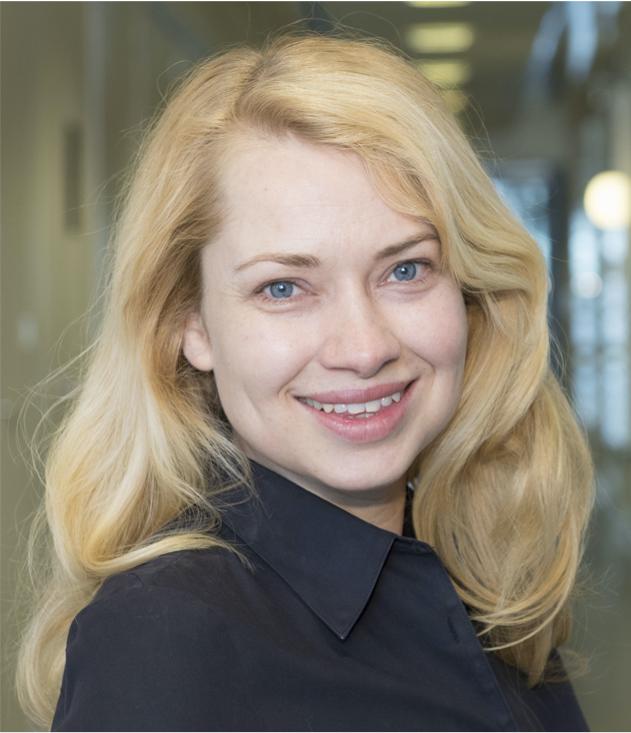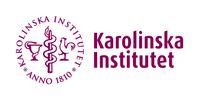Brain differences in pain modulation in people with self-injury behaviour
Researchers at Karolinska Institutet in Sweden might have found an explanation for why people with self-injury behaviour generally feel less pain than others. The key seems to be a more effective pain-modulation system, a discovery that can benefit people seeking help for their self-harm. The findings are published in the journal Molecular Psychiatry.

Most people try to avoid pain, but some, especially adolescents and young adults, can sometimes subject themselves to physical injury. Self-harming is strongly associated with other mental health issues, such as anxiety and depression, but far from everyone with such a condition engages in self-injury.
”We have long tried to understand how people who display self-injury behaviour differ from others and why the pain itself isn't a sufficient deterrent,” says Karin Jensen, researcher and group leader at the Department of Clinical Neuroscience, Karolinska Institutet, and the study's corresponding author. ”Previous studies how shown that people who self-harm are generally less sensitive to pain, but the mechanisms behind it are not fully understood.”
Tolerated more pain
In this present study, the researchers examined these mechanisms by comparing pain modulation in 41 women who had engaged in self-injury at least five times in the past year with 40 matched women without self-injury behaviour. The women, who were aged between 18 and 35, underwent laboratory pain tests at Karolinska University Hospital on two occasions in 2019-2020 during which they were asked to rate the pain they experienced from transient pressure and heat stimulations. Their brain activity during pain was also measured using MRI scans.
The researchers found that on average the self-harming women tolerated higher levels of pain than the controls. The brain scans also revealed differences in activation between the groups. Compared with the controls, the brain activity of the women with self-injury behaviour displayed more connections between brain areas directly involved in the perception of pain and those linked to the modulation of pain.
Another finding was that the difference in pain modulation was not determined by how long, how often or in what way the participants had engaged in self-injury.
Clinically useful knowledge
”Our study suggests that effective pain modulation is a risk factor for self-injury behaviour,” says Maria Lalouni, researcher at the Department of Clinical Neuroscience, Karolinska Institutet, and the study's joint first author with Jens Fust, who recently earned his PhD on the project. ”It also tells us more about differences in the brains of people who engage in self-injury, knowledge that can be used for improving the support provided to people seeking care for their behaviour as well as in conversations with patients to help them understand their self-injury and the need for treatment.”
Limitations to the study include the fact that women with self-injury behaviour tended to report more psychiatric comorbidities than the controls. They also took more drugs, such as antidepressants, which the researchers factored into their analysis.
The study was supported by grants from the Swedish Research Council and the Strategic Research Area Neuroscience (StratNeuro) at Karolinska Institutet, and by a donation from the Lundblad family to pain research.
Publication: ”Augmented pain inhibition and higher integration of pain modulatory brain networks in women with self-injury behavior,” Maria Lalouni*, Jens Fust*, Johan Bjureberg, Gránit Kastrati, Robin Fondberg, Peter Fransson, Nitya Jayaram-Lindström, Eva Kosek, Clara Hellner, Karin B. Jensen, Molecular Psychiatry, online June 13, 2022, doi: 10.1038/s41380-022-01639-y
För mer information, kontakta:Maria Lalouni, forskareInstitutionen för klinisk neurovetenskapTel: 070-947 3148E-post: maria.lalouni@ki.se
Karin Jensen, forskare och gruppledareInstitutionen för klinisk neurovetenskapTel: 070-213 0811E-post: karin.jensen@ki.se
Contacts
Contact the Press Office and download photo: ki.se/pressroom
Images
Karolinska Institutet (https://ki.se/en) is one of the world’s leading medical universities. Our vision is to advance knowledge about life and strive towards better health for all. Karolinska Institutet accounts for the single largest share of all academic medical research conducted in Sweden and offers the country’s broadest range of education in medicine and health sciences. The Nobel Assembly at Karolinska Institutet selects the Nobel laureates in Physiology or Medicine.
Subscribe to releases from Karolinska Institutet - English
Subscribe to all the latest releases from Karolinska Institutet - English by registering your e-mail address below. You can unsubscribe at any time.
Latest releases from Karolinska Institutet - English
New method reveals how the brain and inner ear are formed3.4.2025 20:00:00 CEST | Pressmeddelande
Researchers at Karolinska Institutet have developed a method that shows how the nervous system and sensory organs are formed in an embryo. By labelling stem cells with a genetic ‘barcode’, they have been able to follow the cells’ developmental journey and discover how the inner ear is formed in mice. The discovery, published in Science, could provide important insights for future treatment of hearing loss.
Fluoride in drinking water is associated with impaired childhood cognition7.3.2025 15:30:00 CET | Pressmeddelande
Elevated concentrations of fluoride can occur in well water, and in some countries, it is added to drinking water to counteract caries in the population. A study from Karolinska Institutet in Sweden now supports a few previous studies indicating that exposure to fluoride during the fetal stage or early childhood may impair cognition in children. The study is published in the journal Environmental Health Perspectives.
Children with ARFID face increased risk of disease17.2.2025 17:00:00 CET | Pressmeddelande
Children with avoidant restrictive food intake disorder (ARFID) have an elevated risk of developing psychiatric and physical conditions, a new study from Karolinska Institutet published in JAMA Pediatrics reports. The study highlights the importance of early identification to improve care of these children.
Preterm babies receive insufficient pain management27.1.2025 15:29:17 CET | Pressmeddelande
A large proportion of babies born very early need intensive care, which can be painful. But the healthcare system fails to provide pain relief to the full extent. This is shown by the largest survey to date of pain in neonatal care, now published in the journal Pain.
New study paves way for immunotherapies tailored for childhood cancers20.1.2025 17:00:00 CET | Pressmeddelande
Researchers at Karolinska Institutet and the Astrid Lindgren Children’s Hospital in Sweden have determined how children’s immune systems react to different kinds of cancer depending on their age. The study, which is published in the journal Cell, reveals significant differences between the immune response of children and adults, and has the potential to lead to new tailored treatments for children with cancer.
In our pressroom you can read all our latest releases, find our press contacts, images, documents and other relevant information about us.
Visit our pressroom


